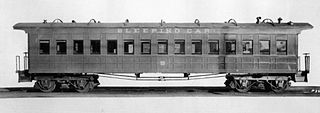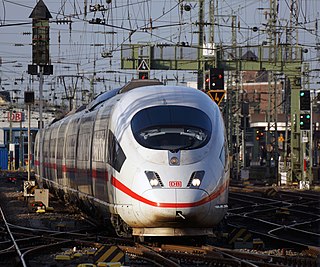History
European Sleeper was launched in 2021, with an announcement in April 2021 of a proposal to operate a sleeper train service between Brussels and Prague, with Czech operator RegioJet announced as a partner, providing rolling stock as well as hauling the service in Germany and the Czech Republic. The National Railway Company of Belgium (SNCB) would be responsible for hauling the service in Belgium, and at the time an operator had not been selected yet to haul the service in the Netherlands. The service was expected to begin in spring of 2022, and a second service was slated to begin in December that year. [4]
Around the same time, Belgian startup Moonlight Express announced its intention to commence night train services between Berlin and Brussels, via Liège, with an expected commencement date of April 2022. [5] Having been announced at around the same time, coincidentally, both services from European Sleeper and Moonlight Express were also scheduled to begin at around the same time.
In May 2021, European Sleeper launched a crowdfunding campaign and managed to raise €500,000 in seed capital by selling shares in the cooperative to more than 350 small investors, [3] reportedly in just fifteen minutes. [6]
One month later, in June 2021, it was announced European Sleeper and Moonlight Express would join forces, with the combined entity taking up the European Sleeper name and pursuing the European Sleeper proposal of a Brussels to Prague route with a start date of spring 2022. [7]
A subsequent fundraising round was launched just before the summer of 2022, with €2,000,000 worth of shares sold to 1400 investors. [3] Around the same time, the company announced that the Brussels to Prague route would be indefinitely delayed, with no revised start date provided. [8]
In June 2022, a partnership with tour operator Sunweb Group was announced, with plans to start new night train services between the Netherlands and French ski resorts by the summer of 2023, and an extension to Southern France the following year. [9] In November, it was announced by the two parties that these plans would be put on hold, citing difficulties in securing rolling stock, track access rights and an operator for the services. [10]
The cooperative announced in December that the planned Brussels to Prague route would initially terminate in Berlin due to track capacity constraints imposed for 2023, with German authorities only permitting one long-distance train every two hours south of Dresden due to infrastructure works. The scaled-back route would commence operations on 25 May 2023 with a view to extending service to Prague to complete the original proposal in December 2023, dependent on whether track rights can be secured. The company cited the lack of availability of suitable rolling stock as its biggest challenge, and said that the service would initially operate with leased rolling stock, with plans to purchase new rolling stock afoot, with plans eventually calling for services to be operated with a mix of new and refurbished rolling stock. [11]
European Sleeper's proposed service from Amsterdam to Barcelona was selected in January 2023 to be a pilot project as part of the European Commission's efforts to improve cross-border rail service and encourage new links to be established. It joins two other night train proposals from Snälltaget and Midnight Trains. [12]
Bookings for the service opened on 20 February, with tickets only able to be purchased through the European Sleeper website. [2] Work is in progress to allow tickets to be booked with Interrail passes. [3]
Services commenced on 25 May 2023, with the inaugural service running from Berlin towards Brussels, arriving at its Belgian terminus 45 minutes behind schedule. Deputy Prime Minister and Mobility Minister of Belgium Georges Gilkinet met the service at Brussels South on its arrival on the morning of the 26th and saw off the train on its return leg to Berlin that evening. [13]
In June 2023, a third fundraising round for €3 million of growth capital [14] was announced, which will open on 21 June and be available to both new and existing investors, who can invest at a starting price of €250, with shares worth €3 to be issued. The cooperative announced it would be the last fundraising opportunity for some time. Funds raised would go towards enabling technical integrations to sell tickets through additional sales channels, hiring a restaurant car for the existing service, preparing service expansions to Prague as well as the proposed services between Amsterdam and Barcelona and ordering new rolling stock. At the same time, the cooperative announced it had sold 10,000 tickets for its existing Berlin-Brussels service, [15] with expectations that €5-6 million worth of tickets would be sold by the year's end. It also announced that Interrail and Eurail passes would be able to be used on services from 1 July, with reservations able to be made from 12 June. [14]

















